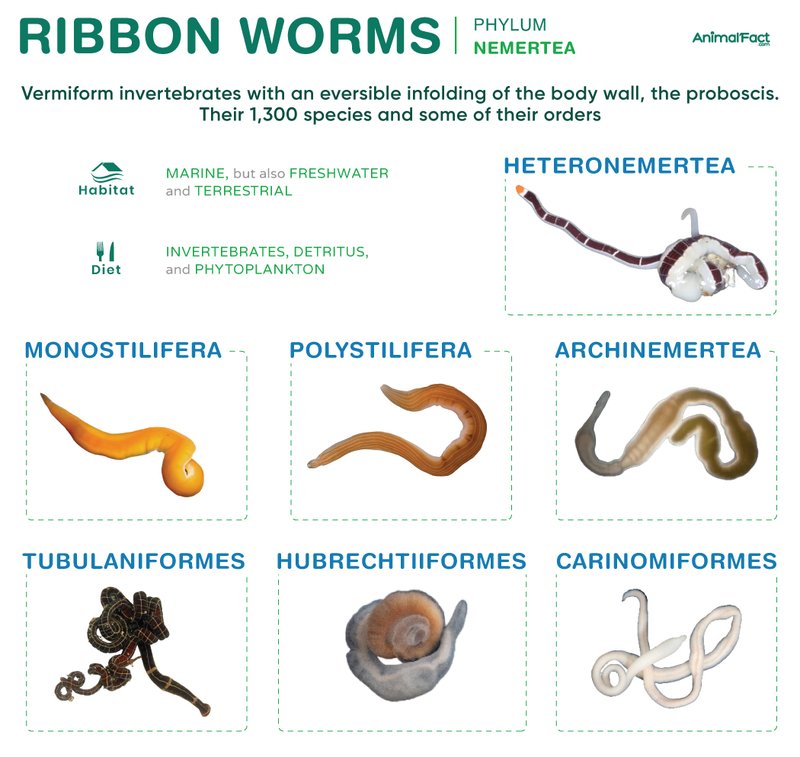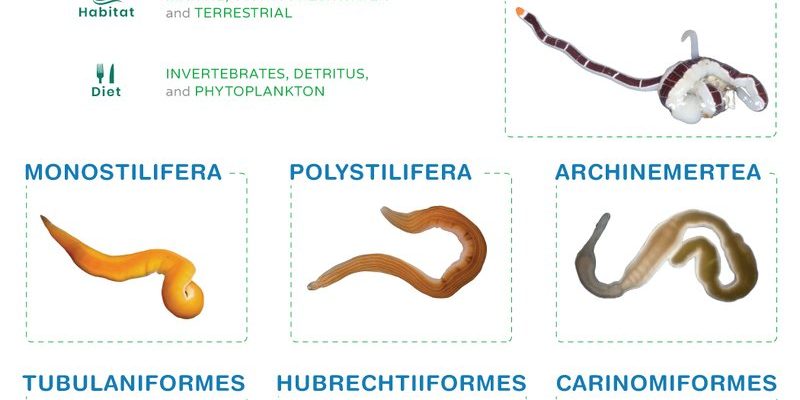
So, do ribbon worms compete with other predators? The short answer is yes. However, their competition might not look like a fierce showdown you’d see in nature documentaries. Instead, it’s more of a subtle negotiation for resources in the complex web of marine life. In this article, we’ll delve into how ribbon worms hunt, who their competitors are, and what that means for their survival.
What Are Ribbon Worms?
Ribbon worms, also known as *Nemertea*, are long, slender invertebrates found in various marine environments. They can range from a few centimeters to several meters in length. Picture a spaghetti noodle, but with a more interesting life story! These worms are equipped with a unique structure called a proboscis, which helps them capture prey.
These creatures mainly reside in oceanic habitats, such as sandy or muddy substrates along coastlines. They thrive in tide pools, where they can find plenty of food, such as small fish, crustaceans, and even other worms. The proboscis acts like a harpoon, allowing them to grab and immobilize prey quickly.
Interestingly, ribbon worms have a remarkable ability to regenerate their body parts, making them resilient competitors in their underwater world. This regeneration capability gives them an edge when faced with threats from both predators and rivals.
Predatory Habits of Ribbon Worms
Ribbon worms are opportunistic feeders. They consume a variety of prey based on what’s available in their environment. Their primary hunting method involves lying in wait, using their keen senses to detect movement nearby. Once they sense potential prey, they swiftly extend their proboscis to capture it.
You might be wondering how they successfully snag their meals. Think of it this way: if you were fishing with a net, you wouldn’t just toss it in randomly; you’d wait until you saw a fish and then make your move. Ribbon worms do something similar. They can be incredibly stealthy, which helps them hunt effectively without drawing attention from larger predators.
Their diet primarily includes small fish, crustaceans, and sometimes even other small invertebrates. In this way, they play an important role in controlling populations of their prey, contributing to the overall health of their ecosystem.
Who Are Their Competitors?
In the natural world, competition can take many forms. Ribbon worms share their habitat with various other predators, such as fish, crabs, and even other worms. Each species plays a unique role in the ecosystem, and their interactions can be complex.
For instance, take the common shore crab. It competes with ribbon worms for similar prey, like small fish and crustaceans. While ribbon worms use their proboscis for ambush tactics, crabs often dig into the substrate to uncover hidden prey. This means that both creatures are vying for the same meals, but their approach differs.
Additionally, other invertebrates, such as polychaete worms, can also compete for the same resources. These creatures might not attack ribbon worms directly, but they can certainly affect their food supply. In environments where food is limited, competition can become quite fierce.
The Role of Environment in Competition
The competition among ribbon worms and other predators is heavily influenced by their environment. Factors like habitat availability, food sources, and even seasonal changes can dramatically impact how these creatures interact.
For instance, during certain seasons, there may be an abundance of prey along coastal areas. This can lead to increased competition among ribbon worms, crabs, and fish. In contrast, during lean seasons, the pressure may ease, allowing ribbon worms to thrive with less competition for food.
Moreover, habitats that are rich in biodiversity often mean that there will be more competition. In areas where various predators coexist, ribbon worms might find themselves in a constant race against time to capture prey before others do.
How Do Ribbon Worms Adapt to Competition?
Adaptation is key to survival, especially in competitive environments. Ribbon worms have developed several unique strategies to enhance their chances against other predators.
One of the most significant adaptations is their regenerative ability. If a predator manages to snag a part of a ribbon worm, it can regrow that lost section. This not only helps them survive encounters with competitors but also allows them to continue hunting effectively.
Additionally, ribbon worms can adjust their hunting techniques based on the level of competition. When faced with more predators in an area, they might be more stealthy, using camouflage to blend in with their surroundings. This can help them avoid detection while waiting for the perfect moment to strike.
Moreover, some species of ribbon worms can even alter their behavior based on their size and the size of their competitors. Smaller ribbon worms may avoid larger predators altogether, seeking refuge in areas where competition is less fierce, while larger individuals may occupy more open spaces.
The Impact of Human Activity on Ribbon Worm Competition
Humans significantly impact marine ecosystems, and ribbon worms aren’t immune to these changes. Overfishing, pollution, and habitat destruction from coastal development can all influence the balance of predatory relationships in marine environments.
For example, if fishing practices reduce the populations of smaller fish that ribbon worms rely on for food, it can lead to increased competition among other predators. This might force ribbon worms to adapt to a changing food landscape faster than they usually would.
Pollution can also affect their health and, consequently, their competitive edge. If the water quality deteriorates, it could hamper their feeding abilities and overall survival. This creates a cycle of competition that can drastically alter their ecosystem in negative ways.
Ribbon worms may not have the intimidating presence of larger predators, but their unique adaptations and strategies make them fascinating players in their underwater realm. They do indeed compete with other predators, navigating a complex landscape of hunters for food and survival.
As we continue to learn more about these creatures, it becomes clear that every aspect of their existence—from their feeding habits to their competitors—leads to a richer understanding of marine ecosystems. So, the next time you hear about ribbon worms, remember they’re not just simple invertebrates; they’re intricate parts of a much larger story. Their journey and survival in an ever-changing environment are as captivating as that of any lion on the savannah.

